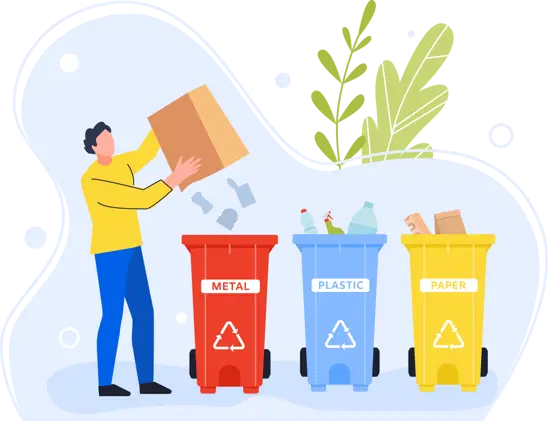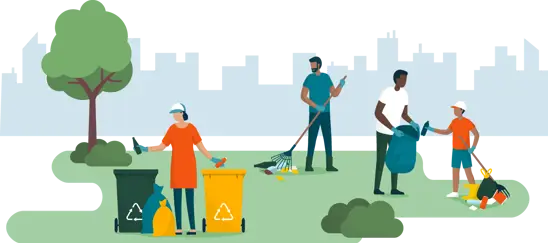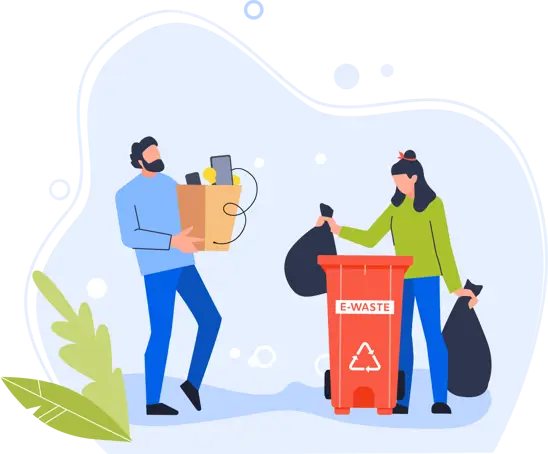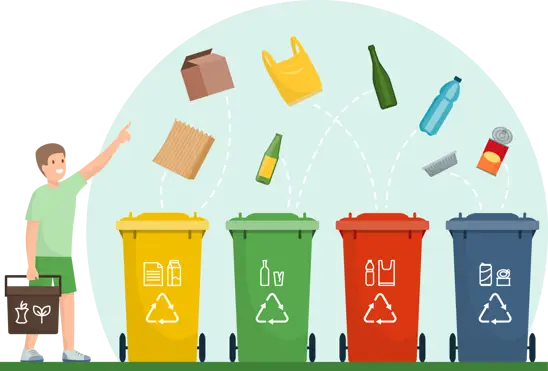
Mastering Construction Waste Removal: Smart Strategies for Clean, Compliant Sites
Construction waste removal is crucial for sites generating a wide range of waste materials. If left unmanaged, waste can quickly become a safety hazard, cause compliance issues, and environmental problems.
Keeping sites clean, organised and compliant by adopting effective waste disposal strategies is not just good practice, it is a legal requirement.

Understanding Construction Waste
Types of Construction Waste
Construction projects typically produce a mix of materials that fall into three main categories:
- Inert waste: includes concrete, bricks, tiles and soil, which do not decompose or pose a hazard
- Non-inert waste: typically includes plastics, insulation materials, timber and general packaging
- Hazardous waste: such as asbestos, oils, paints and solvents that require special handling and disposal
Ensuring these types of waste are segregated properly is essential not only for efficient construction waste removal but also to ensure legal compliance with the Waste (England and Wales) Regulations 2011. This legislation requires businesses to separate and manage waste in line with the waste hierarchy.

Why Construction Waste Removal Matters
Construction waste removal by licenced waste partners plays a vital role in minimising environmental impact. Poor handling can lead to pollution, illegal dumping and increased landfill use. Managing waste responsibly is essential for reducing a business’s environmental footprint.
To maintain site safety, clear waste disposal strategies must be in place. If left unchecked, waste can obstruct pathways, create trip hazards and increase the risk of accidents. A well-managed site is not only more efficient but also far safer for staff and visitors. Under the Construction (Design and Management) Regulations 2015, contractors have a legal duty to manage waste in a way that reduces risk and ensures a safe working environment.

Government Regulations and Compliance
HSE Requirements for Storage and Disposal
Under HSE Guidelines, construction sites must have clear systems in place for the safe storage and removal of waste. The guidance includes using designated areas, secure containers to prevent spills and keeping materials away from vehicle routes and walkways. Sites can ensure they adhere to this guidance by utilising waste segregation bins to separate materials on-site safely and efficiently.

DEFRA Waste Strategy and Compliance
The DEFRA Waste Strategy outlines the long-term plans set by the UK Government to improve waste management across all sectors, including construction. The strategy promotes sustainable practices such as reducing waste at the source and increasing reuse and recycling through the adoption of greener waste technologies.
For construction firms, this strategy means the implementation of more sustainable approaches to construction waste removal and working closely with compliant waste partners.

Consequences of Ignoring Waste Disposal Regulations
Ignoring legal responsibilities around construction waste removal can lead to serious consequences for businesses and site operators.
With no waste disposal strategies in place, businesses can risk:
- Fines or prosecution under environmental and health and safety laws
- Delays in project timelines due to enforcement action
- Long-term reputation damage among clients, regulators and potential waste partners
The legal and financial repercussions of failing to comply with waste removal legislation and guidelines can be significant, far outweighing the short-term setup costs of putting proper waste disposal strategies in place.

Effective Waste Disposal Strategies to Use on Construction Sites
Plan Your Waste Disposal
Construction waste removal planning should start before a project begins. Pre-project planning can help to identify the types of waste your project is likely to produce. Thereafter, conducting waste audits and forecasting can help to estimate waste volumes and plan suitable collection schedules to help reduce on-site disruption and keep disposal costs manageable within waste disposal strategies.

Choose The Right Disposal Methods
Choosing the right method for waste removal can help reduce your environmental impact and ensure compliance.
- Recycling: Many inert and non-inert materials can be recycled or repurposed
- Reusing: Salvaging timber or bricks, for example, can reduce costs
- Reducing: Ensuring orders are made for only what is needed to avoid creating excess waste
- Legal vs Illegal disposal: Choose a licenced waste partner to ensure waste is handled responsibly, meets regulatory requirements and avoids the risks of illegal tipping or improper handling
Use Waste Segregation Bins Effectively
Waste segregation bins can make it significantly easier to manage different waste types and improve recycling processes. Labelling and colour-coded bins alongside clear signs can promote correct use, reduce contamination, and support compliance across a site. The placement of segregation bins close to work areas (without blocking access routes) can also improve waste disposal strategies.
Training Workers on Waste Management Best Practices
Waste disposal strategies are only effective with proper implementation and workers understanding their role in managing site waste. Training through talks, clear signage and ongoing guidance can help to ensure waste is correctly handled and reduce risk and support compliance.

Take Control of Your Construction Waste Removal Today
At WM101, we help businesses implement safe and compliant waste disposal strategies, including supplying appropriate waste segregation bins to aid in effective business and construction waste removal and on-site compliance.
Contact us today to find out how we can manage waste removal with tailored solutions to keep sites safe and compliant.
14/07/2025